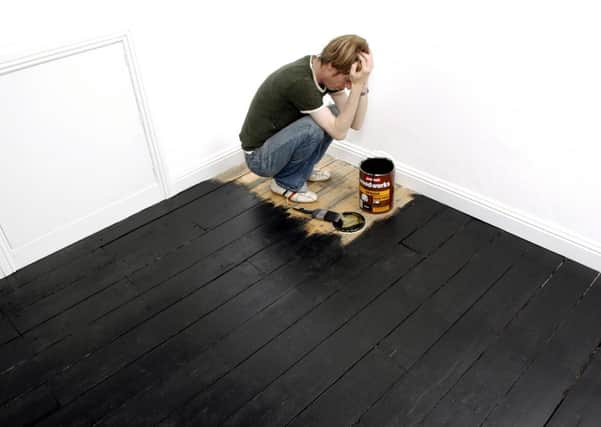Are today’s throwaway generation killing DIY?


And it seems today’s young people do have a gap in their knowledge when it comes to do it yourself – preferring to hire a professional to do jobs at home, so causing the decline of the DIY store.
Home Retail, which owns the Homebase chain, announced yesterday that it is to close a quarter of its 323 branches in the next three years, partially due to “the rise of a generation less skilled in DIY projects”.
Advertisement
Hide AdAdvertisement
Hide AdChief executive John Walden, who took up the post in March, said people are less enthusiastic about DIY projects than they were in the past and were more likely to hire tradesmen to carry out work on their homes. A statement from Home Retail said: “Although economic indicators have more recently improved, several structural factors continue to affect home improvement retailing, including an excess of retail space, the rise of a generation less skilled in DIY projects, and the growth of non-traditional digital and multi-channel competitors.”
DIY became a popular pastime in the 1990s, when home buyers looked to television programmes such as Changing Rooms for inspiration.
But increasingly busy lifestyles and the loss of the ability to carry out basic DIY tasks have left stores such as Homebase struggling for customers.
Homebase and rivals such as B&Q say they have also been hit by a rise in competition from internet shopping, the sale of DIY products in “non-traditional” retailers such as supermarkets, and a property-market slump during the recession.
Leigh Sparks, professor of retail studies at Stirling University, said an influx of tradesmen from abroad had made it easier to find professional help for tasks which previously would have been done by the homeowner – while a rise in the number of people renting could also have hit trade at DIY stores.
“It used to be the case before the rise of the Polish plumber that getting tradesmen was very expensive and people did DIY because either they enjoyed doing it or because they had no other choice,” he said. “That may have changed because of the influx of eastern European tradesmen into the UK.
“However, there is a lot more rental now and people who rent are not going to be doing DIY on their flats. Also, the average age of buying a property is higher, so people are buying in their early thirties – at a point when they perhaps have a family – and maybe don’t have the time to do DIY projects themselves anymore, as they would have done if they had bought their first home at 22 or 23.”
He added: “There is also a question as to whether the education system has changed so that people no longer learn the skills they would have previously got from school and those skills are being lost. I think we are also all a lot more used to living in a more disposable society where we are used to throwing things away.”
Advertisement
Hide AdAdvertisement
Hide AdIn yesterday’s announcement, the firm said about 30 Homebase branches would close in the current financial year, followed by further closures by the end of 2017-18, taking the total to around 80.
The news comes after B&Q owner Kingfisher last year posted its first drop in profits for five years.
COMMENT
Jane Bradley: How TV shows fuelled our ambitions to get creative
THE 1990s may have been the decade that good taste forgot, but that in itself became a catalyst for a surge in interest in DIY as householders looked to recreate more and more flamboyant looks in their own homes.
Thousands of people dusted off their toolkits and paintbrushes in a bid to imitate the rooms showcased on home improvement shows such as Changing Rooms, which was initially hosted by Carol Smillie – and later by designer Laurence Llewelyn-Bowen, who came under fire from style mavens for his colourful creations.
Heavily patterned wallpaper, bright “feature walls” and mirrored bathroom tiles all experienced a surge in popularity due to the programmes, in which houses were transformed by DIY “gurus” such as “Handy Andy”, a Cockney joiner who shot to fame following his TV appearances.
But Llewelyn-Bowen’s cluttered style of design has actually been credited with bringing back the minimalism favoured in the later 2000s as people reacted against the trend for bright-coloured walls and ornate room decoration and opted for white walls and clean lines.
However, the public’s hunger for ever more impressive renovations grew – taking the small-screen influence on home projects away from the domestic and towards larger projects as featured on Grand Designs, where keen renovators spend tens of thousands of pounds on transforming buildings such as churches into unusual family homes.
SEE ALSO